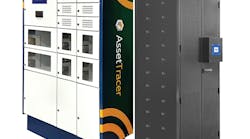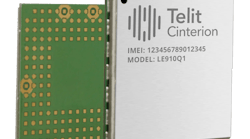The infrastructure for an advanced tracking system using radio waves will be installed in Jacksonville Port Authority terminals this month, setting the stage for the port to electronically monitor its vehicles and, eventually, cargo shipments.
The Transportation Security Administration is paying for the system, which will be installed by Hackensack, N.J.-based I.D. Systems, the company that developed the technology.
The system will use radio frequency identification technology -- commonly called RFID -- to track vehicles, monitor how they're used and make sure they don't leave proscribed areas.
The installation in Jacksonville will cost about $1.6 million, the company said, and is part of a $4.1 million pilot program, paid for by the TSA, to test radio tracking technology in seaports and airports. I.D. Systems has already set up a similar program at Newark Liberty International Airport in New Jersey.
Typically, RFID tags are low-cost, oftentimes disposable, tags that can be placed on everything from pallets of goods in a warehouse to luggage at an airport, allowing the goods to be tracked as they are moved around.
But the system being installed at the port is a bit more complex: Each vehicle owned by the port authority will be outfitted with a computerized card reader and Global Positioning Satellite receiver. All employees who use the vehicles will be issued ID badges with embedded RFID tags.
"Our system is an RFID tag on steroids," said Ken Ehrman, president of the company that has been working on vehicle tracking since 1995.
I.D. Systems technology has typically been used by commercial customers, including Ford Co. and Target Corp., but government interest was sparked by new terrorism-related security concerns.
"The driver is security," said Ron Baker, deputy executive director and chief financial officer for the port authority. "Technology like this allows you the freedom to do some pretty impressive things."
The system will not only help with security, said Kathy Seabrook, director of information technology at the port, but may also improve some operation issues. For example, instead of filling out logs to show how long a vehicle has been in operation the computer installed in the vehicle can capture that information and send to a central server whenever the vehicle passes a transmission point.
Eventually, the technology might be used to track cargo, Ehrman said, letting the port know where individual containers go on port property and which vehicle transported them.

